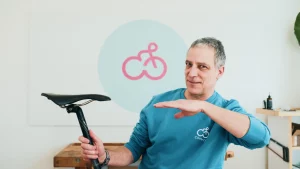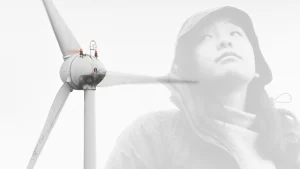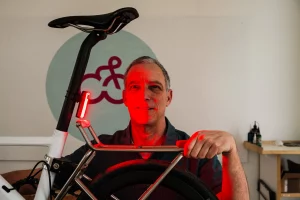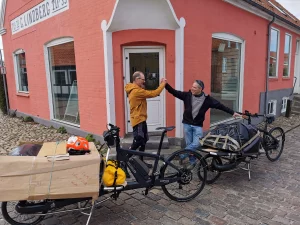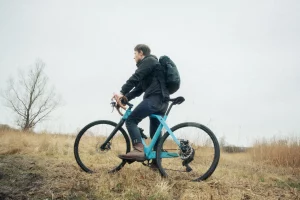An electron wind - understanding e-bikes
26.02.2024
At Coh&Co we produce unique bicycles ideally suited for the urban environment. A growing portion of these are e-bikes. E-bikes have been around for almost 130 years, it is however first during the past decade or so that they have managed to come of age. Much of this is due to battery technology and controller technology. Modern lithium-ion cells have a power density greater than 4 or 5 times that of an old-fashioned lead-acid battery from yore. Just as important as power density, they have gotten much smaller occupying less than one-twelfth of the space when measured in Wh/L. That means there is much more zoom for the room and less weight to push around.
While this article isn’t about motor effects, watts, volts, thermal dissipation or anything else, it is intended to bring you some of our reflections and thoughts when designing a bike. Hopefully also insight into why we have chosen to equip our bikes as we do and most often utilise hub-mounted motor systems.
Hub motors and “mid-motor” drive systems have existed since the middle of the 1890s and I am pretty sure their faults, merits and differences have been debated as long as they have been around. Although some may disagree, we believe that they both have their place.

Much more interesting than what or where the motor is on the bike is what it can and may do. European Pedelec (EPAC) rules, which vary a bit, generally define the pedelec as a single-motor bicycle. It must have a functional crank and pedals intended to be used to propel it, and you must be actively pedalling for the electrical assistance to engage. Assistance from the electric motor has to cease at a maximum speed of 25 km/hour. Similarly, the maximum continuous rated power output of the motor can’t be more than 250 watts. It can have a help push effect that allows you to walk beside the bike with electric assist and without pedalling but this must be limited to 6 km/ hr.
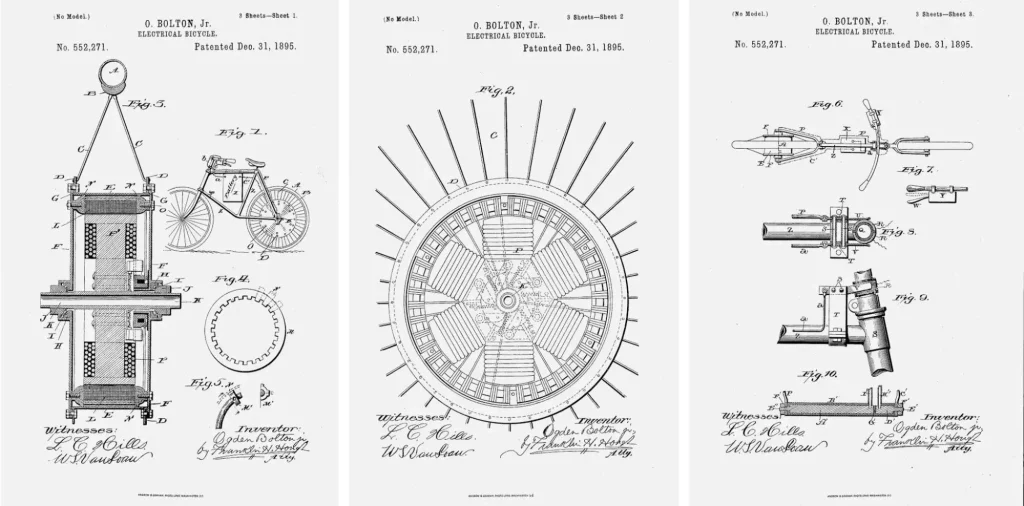

In contrast to the pedelec, Coh&Co often receives faster more powerful bikes and the answer is yes these do exist. They are called S-Pedelecs and we don’t have any in our assortment but the rules are pretty straightforward. As with the pedelec classification, the rules may vary a bit but they maintain the same general theme. There is also an age limit, here in Denmark a 15- 18-year-old needs to have a moped licence to operate an S-Pedelec. Multiple motors are allowed. Lights must be functional at all times of the day when riding. Here in Denmark, a rider must wear a helmet. It is not permitted to fit them with a child or baby seat which may make them a deal breaker for any family with young children, nor are you allowed to pull a trailer. Here in Denmark, there is a 0,5 / thousand blood alcohol limit just like a car. You also need to carry insurance and proof of insurance on you at all times when riding. We know that these bikes appeal to many, but to be honest we just don’t see the need for them in urban life and they seem to me to be more of a danger on a bike path than is prudent.
So until now, I have talked a bit about mid-motors and hub-wheel-motors and regulations but I haven’t gotten into what, why, when and where.
Hub-motor or mid-motor? Truth be told there is no answer, and as the patent pictures illustrate this is an age-old discussion. This discussion has also raged inconclusively in the automotive industry where although mid-motor electric carriages have been around since the mid or late 1880s many took a hub-motor approach; by 1900 Porsche was building multi-motor, hub-motor electric cars (and hybrids). One thing to keep in mind is that no matter which category of system we choose there are many different configurations and their characteristics vary greatly from manufacturer to manufacturer.
All of Coh&Co’s current bicycle models rely on hub-motor systems but let’s take a quick look at mid-motors anyway.
Mid-motor systems do offer a couple of notable advantages but they also come at a performance cost. The first advantage of a mid-motor is the limiting of the “unsprung mass” of the motor in the rear wheel of a full-suspension bike. Unsprung mass refers to the weight of components on a bike that are not supported by the suspension system, such as wheels, tyres, brakes, and part of the drivetrain. In mid-motor e-bikes, the motor is typically positioned near the centre of the bike, close to the pedals. Reducing unsprung mass can help improve handling, comfort, and performance. When the motor is centrally located, it can contribute to a more balanced distribution of weight, reducing the amount of unsprung mass compared to bikes with motors mounted on the front or rear wheel. This can lead to better traction, improved manoeuvrability, and a smoother ride, especially over rough terrain. As you can see, this could be good for a full-suspension electric mountain bike design where the weight of the motor flailing up and down as you hurdle over roots and jumps would adversely affect ride quality and contradict the work of the rear suspension. Unsprung mass is often cited as the biggest reason why automotive manufacturers don’t use hub motors.
Another merit of mid-motor systems, more relevant to the urban cyclist, is that they facilitate putting internal hub gears in the rear wheel. In turn, allowing the drive system to be fitted with a belt instead of a chain. This is a definite plus for the mid-motor on city streets.
At the risk of provoking, I will touch on a delicate topic. I have often heard people say that mid-motors develop more power than a hub motor but that is quite honestly a confusing and semantical discussion. Pedelec motor power is limited to 250 W and that is the power output of the motor. If there are gains to be made they are in the gearing and the motor’s internal losses.
When you shift to a higher gear ratio, engaging a smaller cog in the rear (or a larger chainring in the front), your bike will require more torque to maintain the same speed or accelerate. This means the motor will need to output more power (watts) to provide the necessary torque. However, at a given speed, the motor might operate more efficiently in a higher or lower gear because it can spin at an RPM more optimal to its performance curve. Thus reducing internal losses. So, while changing the gear ratio doesn’t directly change the wattage output of the motor, it can affect the torque and speed requirements, which in turn can influence the power demand from the motor to maintain performance. All of the above needs to be balanced with that there are transmission losses inherent in the drivetrain and that they “reduce” the amount of the available 250 watts that get to the rear wheel.
I don’t like focusing on problems but I would like to explain why we have designed our current models as we have. Coh&Co is a bicycle manufacturer and most of our bikes are in the urban market. As frame designers, we choose to design our bikes to ride well with and without a motor. Our bikes are not defined by their motor but rather by the cyclist! We don’t like the idea of needing to design our frames specifically to meet the needs of a specific motor manufacturer and model only to risk that our frames become unserviceable and obsolete at the whim of a third-party manufacturer. Secondly, we believe that it is important for us to be able to keep riders on the road. With a rear wheel hub motor issue, we can simply replace the rear wheel with a substitute. In some cases, this can be done in minutes without being concerned about decommissioning the bike for a long period. Rear hub-motor e-bikes can also be upgraded and downgraded too and from being electric or manual.
Another wonderful reason for a rear hub motor is that it makes it easier to choose a system with Kinetic Energy Recovery (KERS). We love our Zehus and Neodrive motors and if you want to know more about them then you can follow this link to an article about Zehus but for the moment I just want to address the following example of how a diligently implemented Kinetic Energy system augmented with a bit of Active recovery can do a great job of humanising the electric bike offering the rider the best of both worlds.
